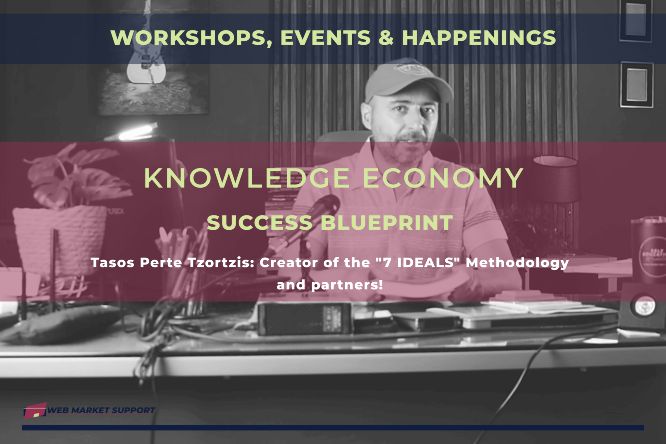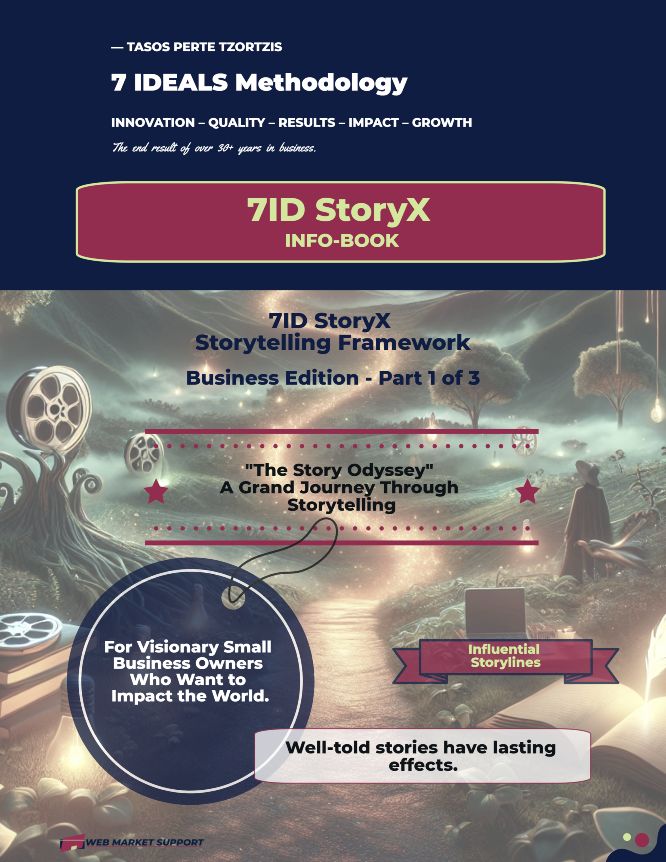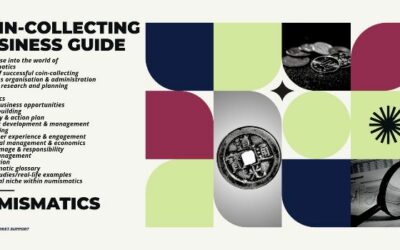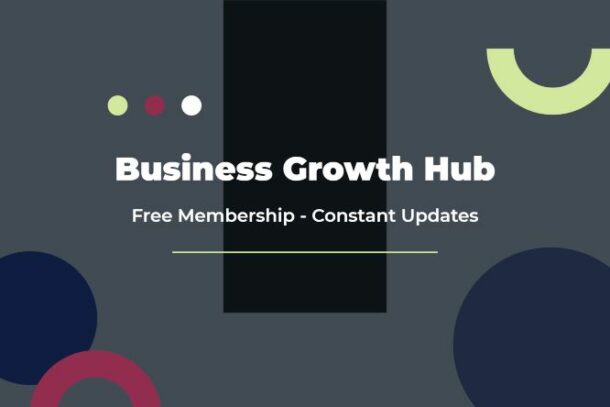The world of marketing has been shaking up during the last few years due to significant updates on how user data is being collected, stored, and shared online.
As I discussed earlier this week, we are moving toward a more secure, safe, and private eco-system where users will gain control over their data and privacy, Web 3.0.
The first signs of those changes were revealed with GDPR followed by CCPA regulations. Then, we had the iOS 14 and iOS 15 updates by Apple in which the big tech corporation gave more control to its users over their data. The advertising and marketing landscape has been transformed ever since.
These updates come as a result of user dissatisfaction with online experiences and distrust. Marketers, business owners, and agencies overwhelmed users with countless ads, retargeting campaigns, and other marketing communications, and advertising networks had their users’ data breached, stolen, or sold in a series of scandals.
Inevitably, we reached a point of no return: now we have to reshape our strategies and change the way we approach consumers and collect data.
And today, I want to discuss data with a focus on zero-party data.
Let’s dive right in!
Zero-Party, 1st-Party, 2nd-Party, 3rd-Party Data
X-Party Data
Let’s explore the various types of data to discover which ones are the most important in business and what we can do to get prepared for what’s coming next in the new version of the web.
There are 4 categories:
- Zero-Party Data
- First-Party Data
- Second-Party Data
- Third-Party Data
Now, before we move on, I want to further group these 4 categories into 2 main categories so we can understand the concept easier:
- Data owned by the companies, us: zero-party and 1st-party
- Data owned by other companies, parties: 2nd-party and 3rd-party
Zero-party data: it’s data that prospects and customers share intentionally, deliberately, proactively, and consciously with brands, us.
It includes information collected with polls, surveys, assessments, quizzes, website widgets, interactive content, preference center data, purchase intentions, personal context, how consumers want to be recognized by brands, and membership applications.
Zero-party data did not exist as a term, it was part of what we know as first-party data.
Forrester Research coined this term and since then it has been widely accepted by marketers, agencies, and business owners.
And when you go through the next section, you’ll see that zero-party and first-party data are kinda the same.
The difference is this: first-party is implicit data and may only be derived from the analysis of explicit data. On the other hand, zero-party data is explicit data.
With first-party data, we collect information as users interact with our web properties and marketing communications, and with zero-party data, users are voluntarily providing distinct information about themselves.
From all types of data, this one, zero-party, uncovers the most sensitive information about consumers.
It’s a goldmine.
It helps brands personalize content, advertisements, experiences, and all marketing communications.
It creates a safe environment for 1-1 marketing.
It helps brands to build trust and authority, improve customer satisfaction, and make important decisions about product development.
It helps acquire prospects, turn prospects into customers, and retain them for a long time.
It helps us understand customers on a deep and emotional level and gain insights into the language they use.
It’s accurate, high-quality data that opens a whole new world of opportunities.
First-party data: it’s data collected and owned by the company itself. It’s information collected directly from users that are interacting with your brand.
It includes website data, mobile application data, CRM data, live chat apps data, subscription data, transactional events like the purchase of a product/service, email communications, sales interactions, call center calls, customer feedback (in-person or online), data collected during online events such as webinars, live video calls, and other, and social data.
We collect this data with the help of analytics platforms that track user behavior on our web properties or during our marketing communications with prospects and customers online or offline.
This data is extremely valuable as it comes directly from the source. It’s very effective as we collect demographic and psychographic information about our prospects and customers that will help us understand and serve them better and will give us direction for our marketing campaigns as this information is relevant to a brand’s industry and can be used to approach users with similar characteristics.
It’s high-quality, accurate information, very cost-effective, and easy to collect and manage if you use a data management platform (DMP).
It’s also data that users provide on their own and so worries about their privacy are insignificant and can be easily dealt with through the privacy policy page.
I hope that you are using first-party data because if you don’t, you simply miss out on an enormous opportunity to dive deep into your users’ behavior to uncover their needs and wants and recognize their intentions.
If you don’t listen to the market and what people have to say, you won’t be able to launch successful products or gain a competitive advantage.
In combination with zero-party data, it’s the most precious information that we have.
Second-party data: it’s data collected by a company and shared with another company.
It’s someone else’s zero-party and first-party data.
It’s accurate data but you depend on someone else to collect it. It’s data coming from the source directly but this source is different than your own audience.
It includes data from all the sources we mentioned in the previous two categories.
There are marketplaces that connect companies and enable 2nd-party data transactions.
Only involved companies have access to this data.
Before you proceed with any transaction, you should do your own diligence and discover trustworthy partners.
2nd-party data helps you gain insights into new audiences, scale your reach, predict customer behaviours, and build relationships with the cooperating companies that can be proved extremely valuable in the future.
2nd-party data is more relevant, reliable, and high-quality compared to 3rd-party data, and because it’s data that has not been sold widely, it has more value. On the contrary, 3rd-party data can be sold to just about anyone.
The downside is that you never know the quality of the source and in the worst-case scenario, you might end up using incorrect or even fake data.
Third-party data: it’s data collected by data brokers and aggregators who then sell it to other companies usually for advertising purposes.
It’s complex, multifaceted data.
This data comes from a variety of sources which are then aggregated, segmented, and sold to other companies (third parties).
It’s anonymous data from various sites and apps.
It’s not data coming directly from a customer-company relationship.
It’s data exchange.
It’s the most scalable type of data but at the same time, the less accurate.
It can be demographic, psychographic, and firmographic data and for many years, the vast majority of brands had relied on it.
But things are changing…
Marketers bombarded the market with countless ads, retargeting campaigns, and a host of other marketing communications, and users lost their privacy and data.
At some point, GDPR came into play followed by the CCPA regulation. Users gained more control over their privacy and data.
I’m discussing this topic in detail in my research about Web 3.0.
I no longer trust 3rd-party data. The marketing world has been flooded by companies that only care to maximize their profits and they don’t even care about their users, their privacy, and their data, and so they are willing to sell any information for a price.
The effectiveness of 3rd-party data has declined significantly during the last years, and so we’re moving toward a new environment where we need to reshape our strategies and the way we communicate with the market.
Zero-Party Data
Explicit (voluntarily provided)- Polls, surveys, assessments, quizzes, preference center data, membership applications, communication preferences, personal interests.
- Explicit, voluntary, intentional, deliberate, proactive, conscious.
- It enables brands to personalize content, advertisements, and experiences, and do 1-1 marketing.
- It builds customer satisfaction and trust, reduces churn, improves customer lifetime value (CLTV), and helps product development.
- *It’s a goldmine, it helps us understand customers on a deep emotional level.
1st-Party Data
Implicit (derived from the analysis of explicit data)- Website activity, behaviour, and interactions, mobile applications, CRM, live chat, subscriptions, transactional events, point of sale, email communications, SMS, call center calls, customer feedback & support, loyalty programs, bluetooth beacons, social data, data collected during events (online or offline).
- Extremely valuable, coming directly from the source, demographic, psychographic information, and more.
- It helps brands understand users’ intentions, dive deep into users’ behavior, uncover needs and wants, and launch successful products.
2nd-Party Data
External (privately shared)- Other companies’ data (zero-party and 1st-party) sold in private marketplaces or data from trusted partners. The data is purchased directly from the source.
- This data is not openly sold, it has greater value than 3rd-party data which are sold usually to anyone.
- Only the involved parties have access to this data.
- Helps brands scale by reaching new audiences, predicting customer behaviors, and building relationships with other companies.
3rd-Party Data
External (variety of web sources)- This data comes from a variety of web sources which are then aggregated, segmented, and sold to other companies most typically for advertising purposes. In other words, it’s anonymous data of various sites and apps owned by data brokers and aggregators that are sold to other companies (third parties).
- It’s not data coming directly from a customer-company relationship.
- Data exchange.
- The most scalable data but the less accurate.
- Demographic, psychographic, and firmographic information.
What’s Next? The Future Of The Web
We are moving toward a more private, safe, and secure internet where users have control over their data and privacy.
Marketers should discover alternative ways of running ads and approaching consumers in order to build trust and authority.
Brands that are looking to maximize profits without caring about customer experiences and quality will have a hard time surviving.
Also, we have to reshape our strategies for traffic, the way we structure our privacy policy, product development and launches, emails, funnels, and so much more.
We need to be customer-focused and bring value to the marketplace.
We need to become true leaders, movement makers, and problem-solvers.
We need to respect everyone, the users, other brands and partners, competitors, the environment, living organizations, and the planet itself.
We need to provide superior user experiences, entertain and educate our prospects and customers, they are hungry for more. More value, more knowledge, more access, more recognition, and more interaction in real-time.
The world needs high-quality products that can improve people’s lives.
We are moving away from 3rd-party data and external data, on which we relied heavily up until now to 1st-party data and zero-party data.
We can no longer trust external sources of data. The market has been flooded with fraudulent companies.
We are moving toward a more decentralized web away from the control of big tech and giant corporations that don’t care about society.
We are moving toward a more personalized way of doing marketing, listening, and caring, and then providing top solutions that match our target audience’s needs.
The low quality of 3rd-party data leaves no space for arguments.
There had been so many scandals in the advertising industry that no one trusts advertising networks anymore.
There is distrust and dissatisfaction on every level.
And it’s not only advertising the big problem.
All the institutions and all our values have been questioned in the last 2-3 years.
People don’t trust easily anymore.
We need to move toward first-party and zero-party data.
It’s the only way to build trust with our market.
It’s the only way to really understand our customers better, on a deep and emotional level.
It’s the only way to discover hidden needs and opportunities.
It’s the only way to create more empathetic and emotional marketing that influences consumer behaviour.
Acquiring first-party and zero-party data will help us improve performance, reduce costs to the minimum, develop superior products that the market needs right now, answer people’s questions, and find solutions to their problems and challenges.
This is the future of the web, this is the future of marketing and business.
One of the big weapons in our methodology, the “7 Ideals”, is collecting zero-party data.
Zero-party data help us differentiate and smash our competition because most brands focus on profits instead of building trust and providing value.
You have to rely on zero-party data if you want your brand to stand out and create personalized experiences.
The web will be a beautiful place without 3rd-party data, don’t worry. Everything happens for a reason.
We had enough external data that was unreliable and most of the time fake or useless.
That’s it, another article has finished, here on Web Market Support. I am waiting for your comments and thoughts. Till next time.

Tasos Perte Tzortzis
Business Organisation & Administration, Marketing Consultant, Creator of the "7 Ideals" Methodology
Although doing traditional business offline since 1992, I fell in love with online marketing in late 2014 and have helped hundreds of brands sell more of their products and services. Founder of WebMarketSupport, Muvimag, Summer Dream.
Reading, arts, science, chess, coffee, tea, swimming, Audi, and family comes first.















0 Comments